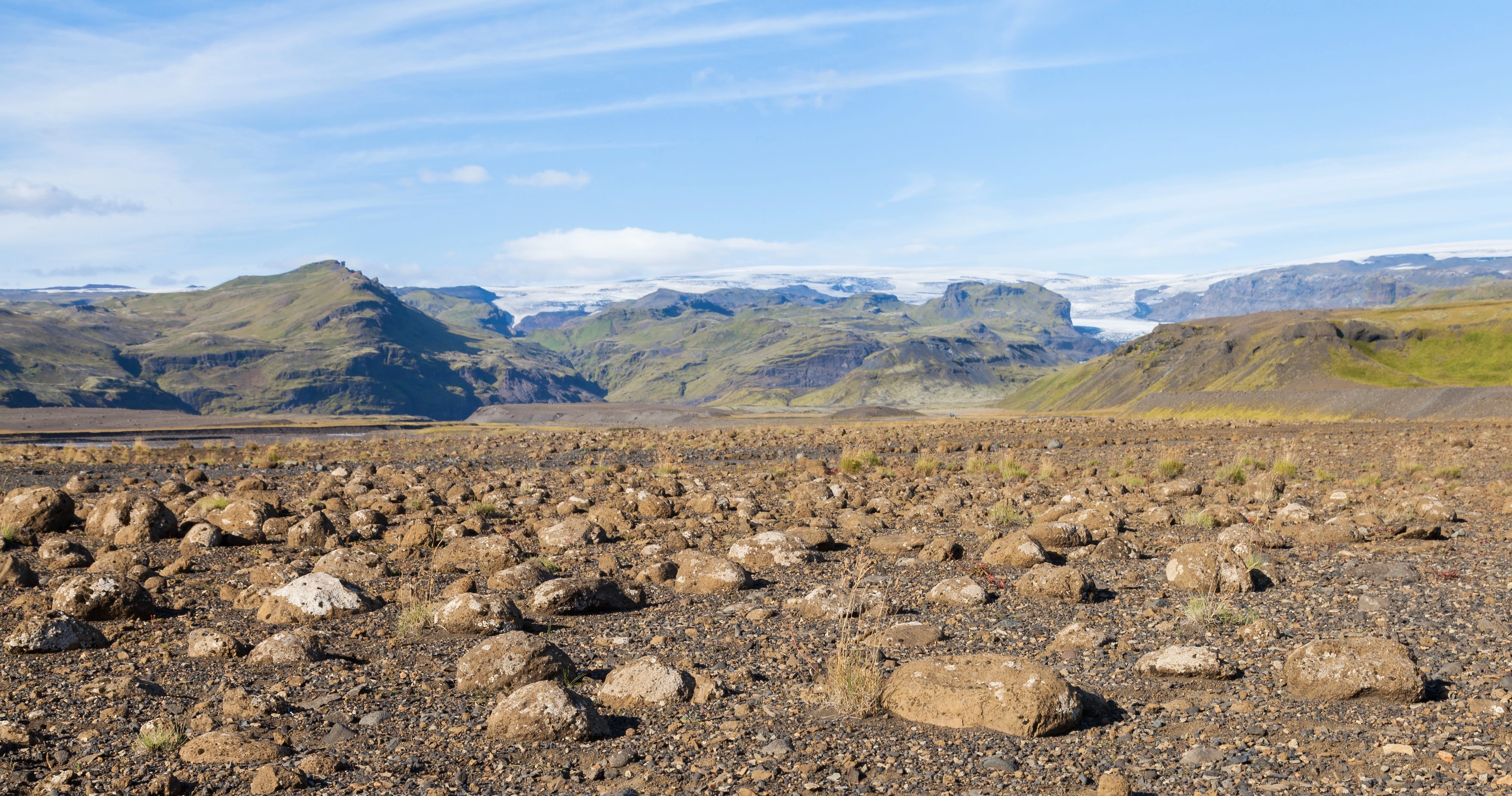




Katla volcano
Katla is a large and powerful volcano located in southern Iceland, beneath the Mýrdalsjökull glacier. Known for its explosive eruptions, it poses a significant threat due to its size and location. Katla erupts approximately every 50 to 100 years, although its last major eruption was in 1918, making it overdue for another. When Katla erupts, it can cause massive glacial floods known as jökulhlaups. These floods occur when the heat from the eruption melts the ice of the glacier, releasing vast amounts of water that rush down towards inhabited areas. This makes Katla particularly dangerous compared to other volcanoes. The ash clouds produced by Katla's eruptions can also impact air travel and agriculture. The ash can spread over large areas, affecting visibility and air quality. Scientists closely monitor Katla using seismographs and GPS instruments to detect signs of an impending eruption. Despite its danger, Katla is a fascinating natural feature that draws interest from volcanologists and tourists alike. Its unpredictable nature serves as a reminder of the powerful forces at work beneath the Earth's surface.
The Area
Top ways to experience
Katla volcano
What other travelers are saying about
Katla volcano
One of the best life experience of my life. Katla is melting and it is so sad. You can see the effects of climate change. A fantastic place.
Hiked Sólheimajökull Glacier south west of Katla last week. Beautiful view! Lagoon at base increasing, Sad to see human environmental impact.
June 18, 2023 woke up early and headed out to Vik Iceland to do the Katla Ice Caves Tour from Get Your Guide Arctic Adventures, Sasha, Shawn, and I went. They drove us about 20 minutes out to the middle of nowhere where the Glacier was! June 18, 2023 once they drove us out, we put our gear on and walked about 20 minutes to the Glacier entrance where we walked through the ice cave out to the center.
Nearby attractions to see
Frequently asked questions
Where is Katla volcano located?
Katla volcano is located in southern Iceland, beneath the Mýrdalsjökull glacier. It is situated to the east of the famous Eyjafjallajökull volcano.
How often does Katla volcano erupt?
Katla typically erupts every 40-80 years, but the last major eruption occurred in 1918. This makes it overdue for an eruption, raising concerns among scientists and locals.
What are the potential hazards associated with a Katla eruption?
A Katla eruption could result in massive glacial flooding known as jökulhlaups, release of volcanic ash, and widespread impact on air travel. The floods can be particularly devastating due to the rapid melting of glacial ice.
Can tourists visit areas near Katla safely?
While there are guided tours available that allow visitors to explore areas around Katla, such as ice caves and scenic landscapes, it is crucial to stay informed about volcanic activity and heed any safety warnings issued by local authorities.
What is unique about the landscape surrounding Katla?
The landscape around Katla is characterized by its dramatic glaciers, black sand beaches, and rugged terrain. These features create a stunning and otherworldly environment that draws photographers and nature enthusiasts from around the globe.






